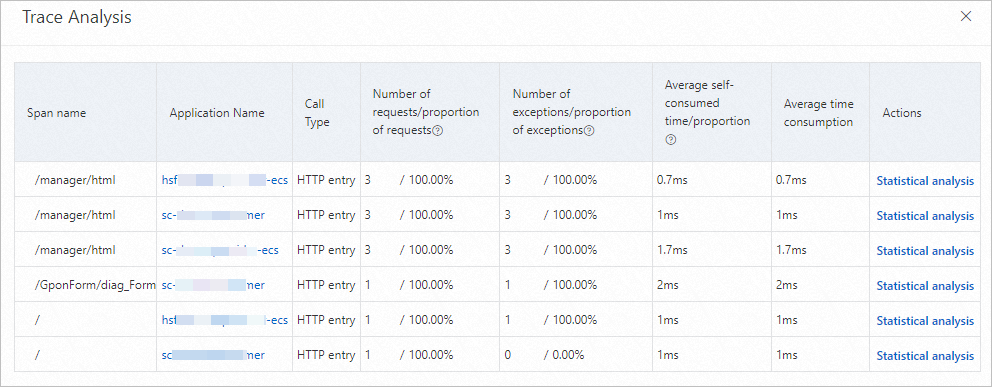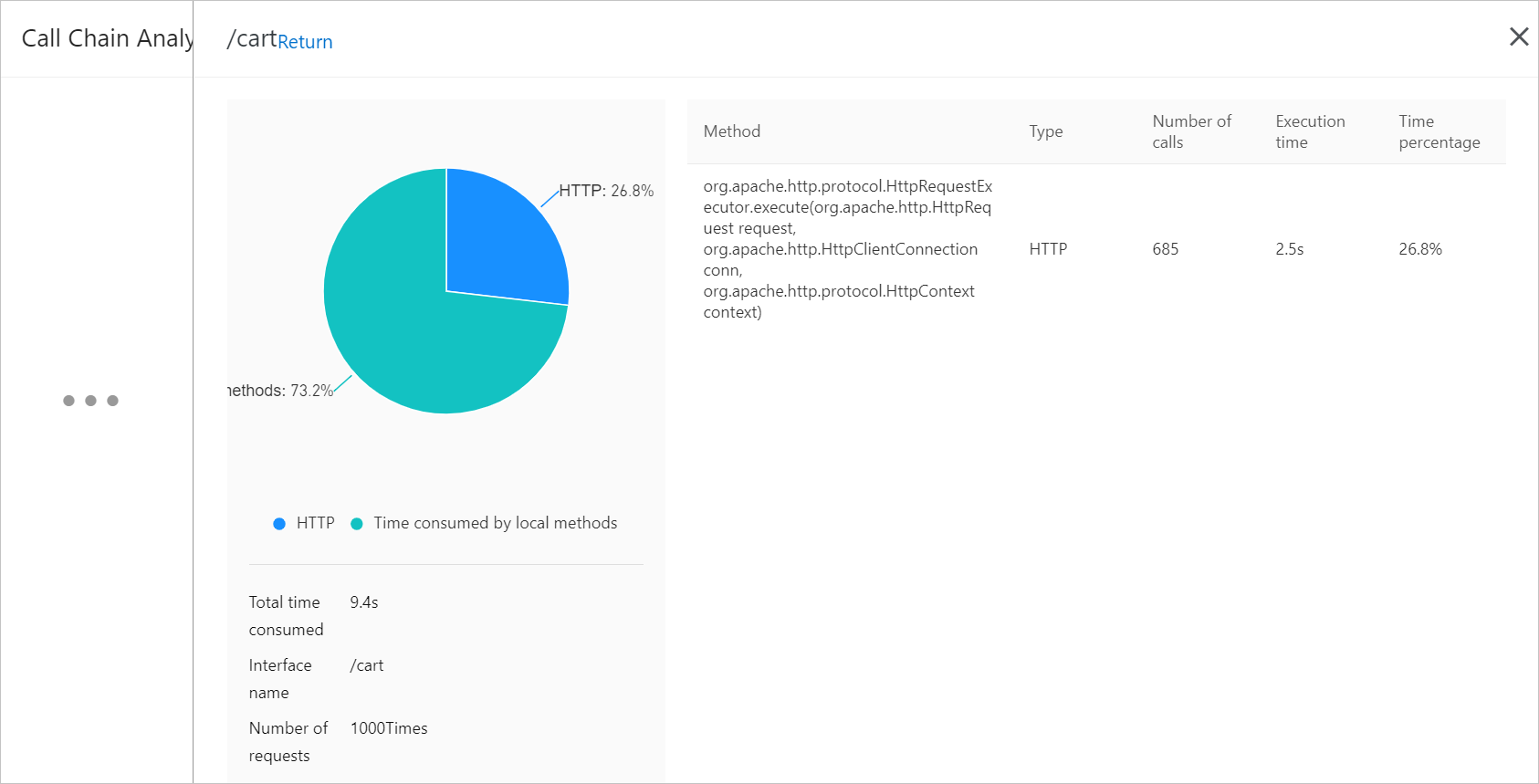On the Trace Query page of the Application Real-Time Monitoring Service (ARMS) console, you can query traces based on multiple filter conditions or query a specific trace based on the trace ID. You can also aggregate multiple traces for analysis.
Query traces
- Log on to the ARMS console.
In the left-side navigation pane, choose . In the top navigation bar, select a region.
On the Trace Query page, select a parameter from the Parameter Type drop-down list, specify a custom value in the Parameter Value field, and then click Add to Query Condition.
You can set the Parameter Type parameter to TraceId for exact match.
Table 1. Parameters
Parameter
TraceId
Enter a trace ID.
Operation Name
Enter an interface name. Fuzzy match is not supported.
Client Application Name
Enter the name of the application on the client.
Server Application Name
Enter the name of the application on the server.
Duration Exceeds
Specify the call duration. Unit: milliseconds.
Call Type
Select a call type.
Abnormal Call
Set this parameter to true to search for all traces related to abnormal calls.
Client IP Address
Enter the IP address of the application that initiates the call.
Server IP Address
Enter the IP address of the application that is called.
Business Primary Key
Enter a business primary key to search for business events.
Response Code
Enter a response code.
Click the ID of the trace that you want to view. You are redirected to the Traces tab.

The Traces tab provides the following information:
Application: the name of the application to which the trace belongs.
Log Generated At: the time when the log was generated.
Status: the status of the trace. Red indicates that an exception exists in the local trace related to the service. Green indicates that the trace is normal.
IP Address: the IP address of the application.
Call Type: the type of the call, which corresponds to the call type of the ad hoc query.
Interface Name: the name of the interface that is called.
Timeline (ms): the time consumed by each service and the proportion of time consumed by each service in the duration of the entire trace.
Analyze traces
On the Trace Query page, select all the traces that you want to analyze and click Analyze Selected Traces.
In the Trace Analysis panel, you can view the span name, application name, call type, number of requests, proportion of requests, number of exceptions, proportion of exceptions, average duration of spans, proportion of spans, and average duration of all the selected traces.

Move the pointer over a span name to view the ID of the trace that contains the span.
Click an application name to go to the Application Overview page of the application.
Click Statistical Analysis in the Actions column to view details of the span. The details include the proportions of different call types for each interface, total duration, interface name, number of requests, recommended samples, number of times that each call method is used. The name, type, total duration, and proportion of time consumed by each call method are also included.
